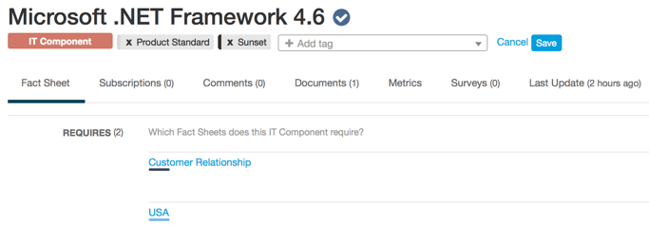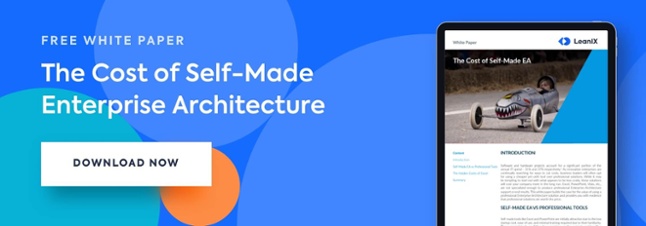
How can enterprises improve good governance while staying agile simultaneously? It is imperative to remain agile to prepare for constant changes in the IT landscape, but without a set of standards, organizations could run into chaos.
'Corporate Governance Is The Very Essence Of A Business': Stephen Green
Standards governance is the mechanisms, processes, and relations by which corporations are controlled and directed. There are two approaches that LeanIX utilizes for our customers – the radical agility approach, and the standardization approach.
Radical agility approach
Radical agility, a term coined by LeanIX’ customer Zalando, is an architectural concept that builds on a service-oriented architecture. This method allows engineers to get work done while management gets out of the way. The radical agility approach is based on three pillars: autonomy, mastery, and purpose, all bound by organizational trust rather than command and control.
Radical agility architectures:
- All applications are service oriented
- Services are reused for different business processes
- They are independent of each other
REST
- All microservices communicate via programming language independent interfaces
- Therefore, services can use different programming languages
- This pattern allows ‘loose coupling’
API-first
- API needs to be defined before the microservice is implemented
- Allows a modular setup of microservices
- Quality is ensured early, as testing can be done already at interface level
The standardization approach
Technology standards help to make better use of existing resources and avoid reinventing the wheel. A narrower set of technologies allows companies to realize economies of scale, e.g., in purchasing or training. By avoiding non-standard technologies, risk management becomes easier. This approach reduces variety and complexity, enables easier risk management, and helps to circumvent too much complexity.
4 Steps to a lean standard management approach:
1. Publish a list of defined standard technologies for everyone
- Which standard technologies, directives & methodologies are available for new and existing applications?
- What is the intended scope of use of these standards?
- For which categories of technologies do standards exist?
2. Identify use of non-standard technologies
- Which Applications are using non-standard technologies in a given scope?
- For a particular Application, are the used technologies standard-conform within its scope?
- Is there a reason for an exceptional use? Is it accepted?
3. Plan standardization
- Which Applications need to be migrated to a Standard technology?
- How to plan & monitor the migration?
4. Regularly update standards
- Which standard technology needs to be replaced or adapted to a changed scope of use?
- How to conduct a Standard update?

Using LeanIX software to clearly define and govern standards:
In order to publish a list of defined standard technologies, it is important to first determine which standard technologies, directives & methodologies are available for new and existing applications. This can prove to be a daunting task, especially if your company does not have an organized view of their application landscape.
LeanIX software allows you to:
Organize the standard technologies, directives & methodologies are available for new and existing applications by:
- Creating IT Component Fact Sheets for every standard with a defined lifecycle, and adding a “standard” tag
- Setting a successor in the case of an outdated technology
- Defining a Tag Group for all necessary Standard status (e.g., leading technology, exceptional use, sunset)
- Adding Standard Status Tag to each standard IT Component Fact Sheet
Standard Catalogue
Filter in the inventory by Tag (e.g., Product Standard) to retrieve a Standard catalogue
Find the intended scope of use for these standards by:
- Using LeanIX Fact Sheets (e.g., User Group, Business Capability)
- Reference the scope Fact Sheets in the “requires“ section of the standard IT Component
Scope information Indicate the applicability of the standard by linking user groups in the “Requires” section
Indicate the applicability of the standard by linking user groups in the “Requires” section
Clearly identify which technologies already have standards by:
- Assigning all standard IT components to the technology stack
- Creating a separate Technology Stack for the whole list of standards (e.g., databases, application servers, methods)
Easily define, set, and govern companywide standards with LeanIX' Enterprise Architecture Management solution. Sign up for an in-depth, personalized demo today!



.png?width=140&height=107&name=BTMPlaybook-FI%20(1).png)

